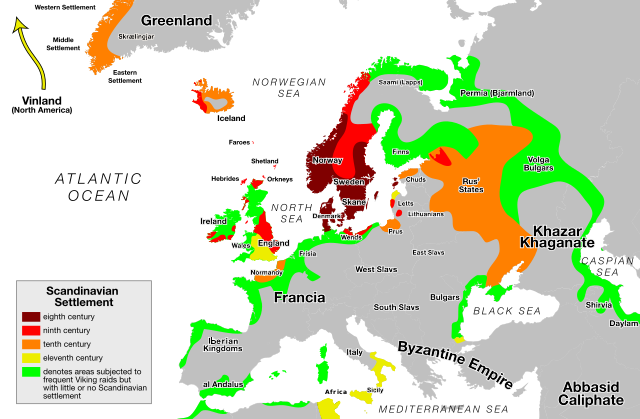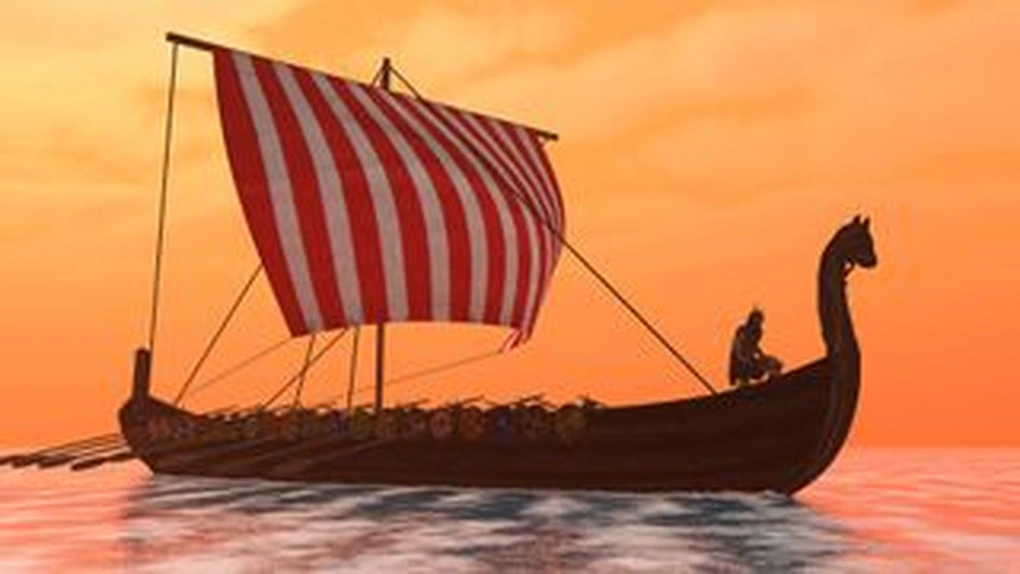Nordic Discovery
Where is the most remote land the Vikings ever conquered?
In less than 300 years, from Scandinavia they have set foot on at least 4 continents to conquer and trade with other civilizations. How far have they gone and why are they so passionate about discovery?
ssentially, the Vikings’ biggest motivations were power and wealth. Professor of medieval archeology Alexandra Sanmark at the University of the Midlands and Islands (UK) said:
“The Vikings understood very well what was happening in England and throughout the British Isles at that time. They knew there was much wealth to be won and they traded with the people of this area for a long time. Then one day they realized that there was no need to buy, sell or exchange anymore, they could rob.”
First, during the Viking Age (approximately 793 to 1066) they organized armies of men who sailed from Scandinavia during the summer months to conduct raiding campaigns and returned home in the fall.
Over time, they began to settle down in new lands, expanding settlements along important conquest routes.
There were periods when the Vikings controlled large areas of land, with the exception of Cnut the Great’s North Sea kingdom. Archaeologists call the Vikings pirates.
There are many generals and lords who sometimes cooperate with each other to form powerful armies, or sometimes they conduct separate conquests, depending on the benefits they see. There is no national pride here, merely personal power and personal wealth.
The first westward raids were raids in northern Scotland, where they quickly controlled the entire population and established Viking-style regulations.

From this springboard, they made short sea voyages to the nearby Hebrides and Faroe islands very easily, and finally reached Iceland in 870.
Perhaps most impressively, around the year 1000, they made their first Atlantic crossings to southwest Greenland, and then to Newfoundland in Canada via a 3,900 km long voyage from their native Norway. .
But while that achievement confirmed the Vikings’ exceptional seafaring skills, evidence also shows that they did not stay long on North American lands.
Archaeologist Ellen Naess of the Museum of Cultural History in Oslo, Norway, says we don’t know for sure why they stopped living in Newfoundland, but the fact is that it was so far from home and The resources are also quite similar to what they can find at home so there is probably no motivation to explore further.
However, the Viking conquest to the east had a completely different character.
Taking full advantage of traveling by water, Viking warriors crossed the Baltic Sea and along mainland rivers in Eastern Europe and Russia, passing through today’s Kiev region of Ukraine and Novgorod region of Russia in 900s and then down to Constantinople in the Byzantine Kingdom and Baghdad in present-day Iraq around the year 1000.
The civilizations here were completely new to the Vikings and they must have been surprised to see the buildings, clothing and artefacts. Here, the Vikings mainly conducted trade and exchange rather than plunder. They settled down with local people and became very powerful people.
In fact, it’s possible that the Vikings traveled much further east than archaeologists have been able to prove.
Archeology professor Sanmark said: “We can trace them through burial practices, settlements or documentary sources, and also the things they brought back to their Scandinavian homeland. In Sweden, there are also Chinese silk, but we cannot confirm how far they went to get this silk. However, it is clear that they had contact with China and India. There is no doubt about it. all this.”
The conquest to the South left less of an impression. They traveled around the northern coast of Francia in what is now France, the Iberian peninsula in what is now Spain and Portugal, and finally along the north coast of Africa in the early 11th century. However, due to very harsh dry conditions that limited waterway transportation , they did not try to cross the Sahara to go further to Africa.
The Viking Age gradually ended around the middle of the 11th century with the development of political relations with other cultures and the expansion of Catholicism, which changed social concepts. But it must be said that in their 300 glorious years, the Vikings left a clear mark in world history.
Archaeologist Naess assesses that in terms of geographical distance, Newfoundland may be the furthest place they have set foot on, but in terms of culture, Baghdad is a greater journey of the Vikings that perhaps we do not know yet. run out of.

